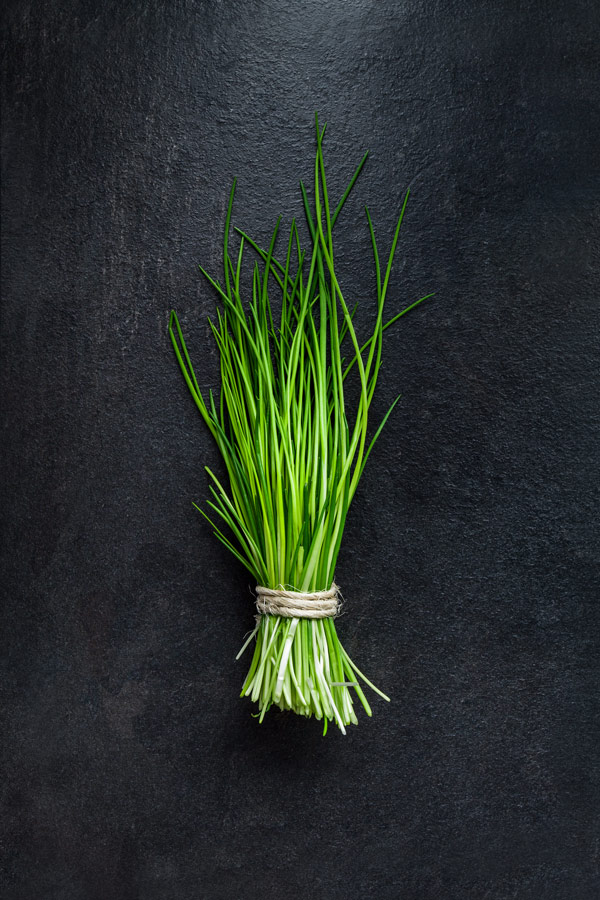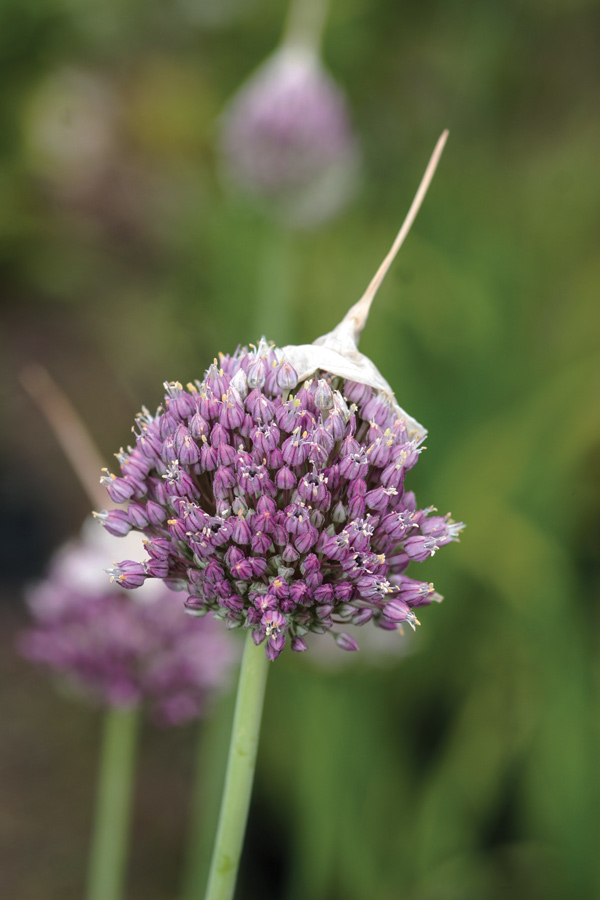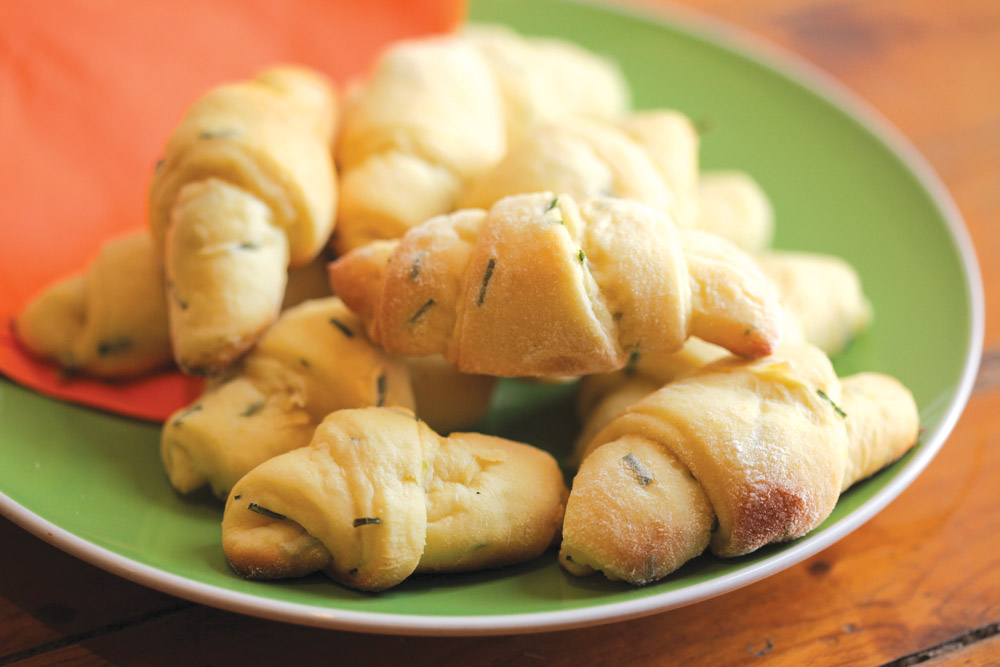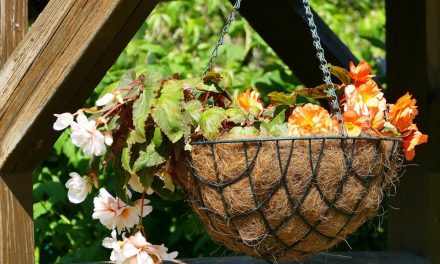Chives
Learn about the allium family.

Chives
Chives (Allium schoenoprasum) are members of the allium family, along with garlic, leeks, onions, scallions and shallots, but with a mild onion flavour. They are all effective in countering infections, including those of the nose, throat and chest, although garlic is by far the most effective. Chives have similar medicinal properties, just not as potent. Nevertheless they are rich in vitamins A and C, as well as calcium and iron. Like parsley, adding one or two tablespoons a day to the diet takes very little effort.
Garlic chives (Allium tuberosum) are grown for their mild garlic flavour. While not as powerful as garlic, they do act as a tonic and blood cleanser.

Growing
Chives are perennial, although they may die down in winter and regenerate in spring, when they also flower. Growing 25cm high and 20 m wide, chives are one of those cut-and-come-again herbs. They grow easily from seed and do best in full sun, but will grow in partial shade, in well-drained, composted soil. Like spring onions, chives form clumps, but only the leaves are harvested (by cutting them off at the base). New shoots emerge quickly. If the plants are fed with liquid fertiliser at half the recommended strength once a month, new leaves will be produced for 2 – 3 years.
Propagating
Divide the plants or sow new seed when they lose their vigour. Thick clumps of chives and garlic chives can be divided and replanted in autumn into freshly composted soil. If you have enough to go around, pot up a few pots and keep them on a sunny kitchen windowsill in winter. The soil must be kept moist and your chive pots should be fed regularly with an indoor plant liquid fertiliser.

What you do
- Lift or dig up a mature clump and remove excess soil from the roots. Wash off the roots so that the bulbs can be easily seen and split apart.
- Carefully break the clump apart, with 5 – 7 bulbs per division. Top and tail the splits by trimming the roots and foliage by half.
- Plant the splits into pots in herb-growing medium or into well-composted soil in the ground. Don’t forget to add bonemeal to encourage strong root growth. Water the chives immediately after planting.
Did you know?
Chives improve the flavour of carrots and keep aphids away from roses, grapes, tomatoes and fruit trees.

Quick tips
- Only pick as much as you need, and use it immediately. Soft leaves don’t store well and quickly lose their goodness.
- Lightly rinse herbs before using, to get rid of grit or dust.
- Use sharp kitchen scissors to snip the leaves.
Using chives
What’s nice about chives is that they usually grow through winter and provide a constant supply. Just cut off the green shoots at ground level and they quickly resprout. Snip the green leaves into egg and cheese dishes, add them to sandwiches, salads, dips, soups, breads and muffins, or use as a garnish.


Chive dinner rolls
Ingredients:
- 1 cup sour cream
- 1 teaspoon salt
- ½ cup white sugar
- ½ cup melted butter
- 2 x 10g packets active dry yeast
- ½ cup warm water
- 2 eggs, beaten
- 4 cups cake flour
- ¼ cup fresh chopped chives
Heat the sour cream in a saucepan, then add the salt, sugar and melted butter. Allow it to cool slightly. Add the yeast, warm water, eggs, flour and chives and mix well. Cover and refrigerate overnight.
Divide the dough into four and take each part and roll it into a circle. Cut each circle into 12 pizza-shaped pieces and roll each piece towards the point, starting with the wide side. Place the rolls on baking sheets lined with baking paper, with the point of the rolls facing down. Repeat until all the dough is shaped, then let them rise until they have doubled in size, which should take about 30 minutes. Bake them at 180°C for 12 – 15 minutes. Serve warm with lashings of butter.










